Study of the Month: May 2021
 As seen in Douglas Adams’ masterpiece A Hitchhiker’s Guide to the Galaxy or in Isaac Asimov’s The Last Question, computers, given enough time, might be able to solve every question. Not always will two words — “Fiat Lux” — be the outcome of their research, nor the answer to life, the universe and everything, however, arguments are made that computers might technically be able to give the solution to chess problems, yet lack what a human would be able to understand: the knowledge about similar ideas shown before. No twomover ever was really solved by a computer in that way (sadly I forgot who wrote such idea many years ago, I apologize for not being able to attribute it).
As seen in Douglas Adams’ masterpiece A Hitchhiker’s Guide to the Galaxy or in Isaac Asimov’s The Last Question, computers, given enough time, might be able to solve every question. Not always will two words — “Fiat Lux” — be the outcome of their research, nor the answer to life, the universe and everything, however, arguments are made that computers might technically be able to give the solution to chess problems, yet lack what a human would be able to understand: the knowledge about similar ideas shown before. No twomover ever was really solved by a computer in that way (sadly I forgot who wrote such idea many years ago, I apologize for not being able to attribute it).
If you want to become a judge, before delving into this article, I’d advise to understand the main concepts from the articles previously published here on aesthetics and on cookhunting, respectively, as those topics are important for judging.
Computer history
The first computer program, as we would understand it, was built by Charles Babbage in the mid-1830s, but among the first programmers there also was a woman — Ada Lovelace, in the early 1840s. That means that the first computer programs are older than the first computer, which, by then called the ‘Analytical Engine’, was only a concept as it was not physically built.
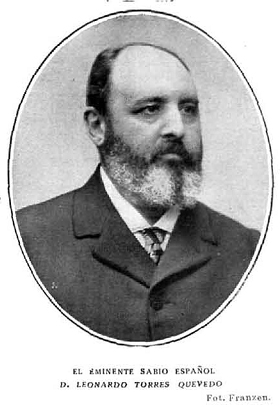 The first chess computer, of course, was not ‘The Turk’ by the Hungarian Wolfgang von Kempelen, which in 1770 was presented as an automaton but was revealed to be a hoax decades later. However, this shows that the idea of a chess computer predates even the first computer programs. In the early 20th century, the first chess computer became a reality: ‘El Ajedrecista’ precisely won with king and rook against king. Leonardo Torres y Quevedo [pictured], a Spanish civil engineer in his 50s, decided to create this real automaton, as some computers were called back then.
The first chess computer, of course, was not ‘The Turk’ by the Hungarian Wolfgang von Kempelen, which in 1770 was presented as an automaton but was revealed to be a hoax decades later. However, this shows that the idea of a chess computer predates even the first computer programs. In the early 20th century, the first chess computer became a reality: ‘El Ajedrecista’ precisely won with king and rook against king. Leonardo Torres y Quevedo [pictured], a Spanish civil engineer in his 50s, decided to create this real automaton, as some computers were called back then.
Of course, the digital computer succeeded the analogue computer in the 20th century, and my visit to Bletchley Park in 2011 allowed me to see the marvellous technology that was used to win World War II, including the codebreaking machine ‘Bombe’. Many wars were fought, be it the war of the birds (a communications warfare around carrier pigeons), the war against ENIGMA, the ground war in Europe, or in the end nuclear war. This dark chapter of humanity brought technological advancements, which might be one of the few good things about a time of complete horror.
Calculation power that nowadays fits into an area of nanometres back then required many cubic meters to store. The early digital computers include the ‘Electronic Numerical Integrator and Computer’ (ENIAC), the Colossus, the Zuse computers, Manchester Mark I, while the very first electronic digital computer is attributed to the American John Vincent Atasanoff. In the U.S. Federal Court case Honeywell, Inc. v. Sperry Rand Corp in 1973 (which was about ENIAC patents), Atasanoff was ruled to be the inventor of the first electronic digital computer. This finding was controversial, but as it was a court ruling, we nevertheless have referred to it here as background information.
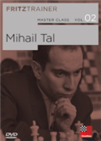 On this DVD Dorian Rogozenco, Mihail Marin, Oliver Reeh and Karsten Müller present the 8. World Chess Champion in video lessons: his openings, his understanding of chess strategy, his artful endgame play, and finally his immortal combinations.
On this DVD Dorian Rogozenco, Mihail Marin, Oliver Reeh and Karsten Müller present the 8. World Chess Champion in video lessons: his openings, his understanding of chess strategy, his artful endgame play, and finally his immortal combinations.
John Vincent Atasanoff | Photo: Iowa State University
The human touch
Many chess programs were written, algorithms were invented for the evaluation of moves, and from the early 21st century even artificial neuronal networks have been used in mainstream computers — spectacular achievements like the ‘Watson’ computer dominating the game show Jeopardy! against Ken Jennings et al., AlphaGo beating Lee Sedol (but the “Hand of God” move by Sedol remaining in Go history), and eventually the mainstream use in chess programs such as AlphaZero, or for the ChessBase end user Fat Fritz et al., led us to where we are today.
However, there is no computer algorithm that completely can disseminate an endgame study, or a chess problem in general. Certainly, with a big enough themes database, Christian Poisson’s WinChloé can tell exactly what themes are shown in a problem, and also the search for predecessors can be aided similarly — for endgame studies, special tools like the ‘Chess Query Language’ also exist. However, it will always be down to an individual judge, or a panel of judges, to finally evaluate a composition (provided that it entered a tourney and was not published outside an event).
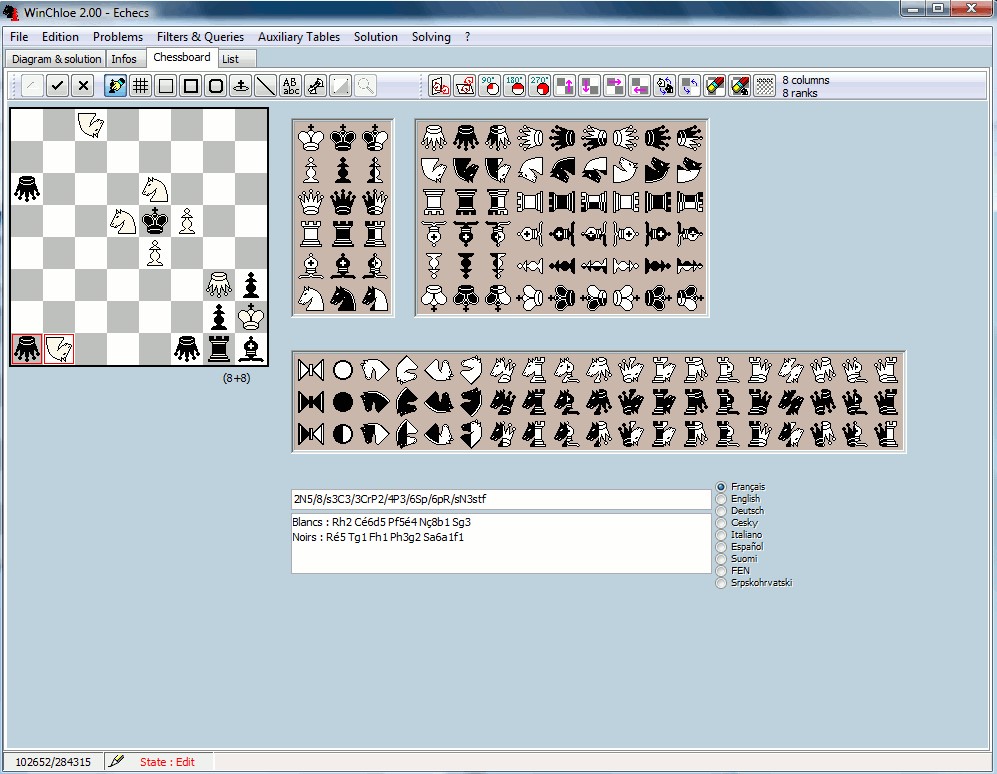
Christian Poisson’s WinChloé | Photo: WinChloé website
While I hold the title of International Judge for Endgame Studies since October 2014, I generally evaluate endgame studies on historical accounts, i.e. I prefer to give fewer distinctions but to do so for really outstanding works. It would be beyond the scope of this article to detail the judging of an entire tourney, showing for each study why or why not it was selected. Instead, I believe a good approach is to present endgame studies and then evaluate them. Note that this by necessity partially overlaps with our December 2020 article about aesthetics.
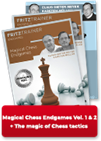 In over 4 hours in front of the camera, Karsten Müller presents to you sensations from the world of endgames - partly reaching far beyond standard techniques and rules of thumb - and rounds off with some cases of with own examples.
In over 4 hours in front of the camera, Karsten Müller presents to you sensations from the world of endgames - partly reaching far beyond standard techniques and rules of thumb - and rounds off with some cases of with own examples.The Codex of Chess Compositions details criteria that are applicable for composing, which also serve as a help for judging.
Of course a composition must be correct, or ‘sound’, i.e. not having cooks (we will talk about cookhunting, i.e. testing if endgame studies are correct, in the future), or other serious flaws regarding its solution being unique and correct. The codex says:
Studies are unsound if there is a method of fulfilling the stipulation which is different from the author’s solution, and may also be rendered unsound by serious duals in the main line, but even in the main line many kinds of duals are normally tolerated.
The tolerated duals are sometimes transposition duals, i.e. a different move order (usually this is to be avoided by the composer, however), usually loss of time duals (the solution working after waiting moves, or arriving at a position later in the solution by a move order that takes longer), sometimes promotion duals (promotion to queen where a rook or bishop would suffice, especially if the promoted piece sees no further play because it checkmates or is captured immediately).
Harold van der Heijden’s essay A minor dual is not a big deal from 2005 takes an in-depth look at the topic (downloadable as PDF). We already had linked his article last month, where we also provided more details on cooks. As such, let us continue.
We talked also about the legality of positions, i.e. it being reachable from the position at the beginning of a game, in the replayable studies of last month. Every endgame study position should be game-legal.
What is described as priority means that only the first published endgame study that shows a specific position and continuation can claim originality. Even the most beautiful endgame study will be disqualified from a tourney if it was published before, possibly by another author. Cases exist where a game anticipated an endgame study idea, but also it is legitimate to publish an endgame study with an idea from a game if that idea was not played, or if the about-to-be-published study adds further innovation.
Paul Farago judged game tournaments, and once as an arbiter, he saw an endgame where he immediately spotted a winning pawn sacrifice, but the players didn’t. The position of the game yielded the foundation for the endgame study, but Farago’s analysis, missed by the players in their game, gave claim to originality and an existence right for that study. This case was presented by Hans-Hilmar Staudte and Milu Milescu in their book Das 1x1 des Endspiels. The following text is from my article Game Studies in EG 208:
Paul (Pál) Farago was known for difficult studies. He was not only an International Judge for studies but worked also an arbiter for practical play. Taking the information from those two sentences together, it is no wonder that even at the glimpse of an eye he would be able to see deeper than the players in the game Breazu - Orban in Cluj 1958. He took the opportunity to publish it as a study.
The game ended with 1.K:f5? K:d5 2.Kg5 Ke5 3.K:h5 Kf5 4.Kh6 Kf6 5.h5 c6! 6.Kh7 Kf7 7.h6 c5! in a draw, creating the try for the study. Farago, watching the game, immediately saw how to win: 1.d6!! c:d6+ 2.K:f5 Ke5 3.Kg5 Ke5 4.K:h5 Kf5 5.Kh6 Kf6 6.h6 d5 7.Kh7 Kf7 8.h6 wins because Black now is a tempo short.
The study above has a complete right to exist with Farago’s name alone, as the players missed the winning way, but Farago found it immediately. This is a clear case, but one that could rarely happen nowadays where every game immediately can be analysed with a computer. Impressive endgame studies found during the analysis of actual games might not be published as such, but merely as game analysis. As such, I took the liberty to label Michael Prusikin’s analysis of a game he played against Gheorghiu as an endgame study in the same article. The entire game, with exclusive analysis by Prusikin (many thanks!) is replayable below.
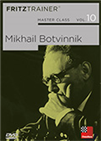 Our experts show, using the games of Botvinnik, how to employ specific openings successfully, which model strategies are present in specific structures, how to find tactical solutions and rules for how to bring endings to a successful conclusion
Our experts show, using the games of Botvinnik, how to employ specific openings successfully, which model strategies are present in specific structures, how to find tactical solutions and rules for how to bring endings to a successful conclusion
“Idei noi în şahul artistic” by Paul Farago | Photo: arves.org
As by the Codex, if a composition is not correct, it loses its priority after three years, but the composer can correct it or retains his right to be named the author if someone else corrects it. However, tourneys have limits of the time after their end where a correction is admissible. If the tourney is a recurring (perpetual) tourney in a publication, such as a magazine, the correction might be allowed in the following period if it is not corrected in time.
The Codex says that a tournament director and judge don’t have to be different persons. However, the director should handle factual matters, such as priority dates, so the judge can concentrate on the judging itself, which is done mostly by their own aesthetic matters. We talked about aesthetics in December 2020, so I add a few practical aspects: I chose to award only outstanding compositions, and based this also partially on the judgments of other judges which I had studied in the database, i.e. without knowing the judges’ criteria but knowing their rankings. I developed my own sense of aesthetics, and wrote about this in my award in Schach in the mid-2000s.
 Michael Roxlau [pictured] provided a tool to me that he uses for his judging. The tool by now is much more refined and understandable, so while I discarded it around 15 years ago, currently I might consider using it if I had to judge a tourney again (in fact, I signed up as a judge for a tourney this year, but not for endgame studies, so his tool is resting, as it specifically is built for studies).
Michael Roxlau [pictured] provided a tool to me that he uses for his judging. The tool by now is much more refined and understandable, so while I discarded it around 15 years ago, currently I might consider using it if I had to judge a tourney again (in fact, I signed up as a judge for a tourney this year, but not for endgame studies, so his tool is resting, as it specifically is built for studies).
I believe that there are universal aesthetical criteria, but also subjective ones. Prior ideas influence what is and what is not worth of the highest distinctions, and as such a judge should always have broad knowledge of what does and doesn’t exist yet. This also means that no judge is infallible, and while tools such as Chess Query Language, that allow a search through PGN files (i.e. databases) with advanced functionality, can help a judge greatly, something might fall through the search. Tourneys have a period after the judge announced and the director published his award where everyone can send in claims of incorrectness, anticipation, etc., and where authors might have the opportunity to correct their incorrect entries. After that period, changes might be made to the preliminary award, and this one or an edited version becomes final.
Personally, I believe that as a judge I have made many mistakes, and as such I do not want to judge again. When I agreed to work at the FIDE Album, I was unaware that I had to rank endgame studies, where I apparently was easier to impress than other judges. I believe in an approach where anthologies should include more but awards should include less studies. Coupling an anthology with points for titles is the best that was agreed upon by the chess composition officials, but unofficial anthologies can be written by everyone. Beautiful and unusual ideas (Tim Krabbé’s Chess Curiosities), comprehensive examinations (Kasparyan’s Domination in 2454 Endgame Studies), even a teaching approach (Chéron’s Lehr- und Handbuch der Endspiele) are all subjects that can lead to an anthology of endgame studies of different flavours. A judge’s work might have ended years or decades ago when an anthologist picks up the endgame studies he considers the best. This leads to general knowledge that is not in line with the aesthetical but rather with practical ideas: if you ask me about a certain 10th prize of a La Stratégie tourney in 1912 by Moravec, I can immediately set up the position (replayable below), but wouldn’t remember any other studies from the same tourney.
Judges, in the end, can give their awards, they can choose the best entries of a specific tourney. The best endgame studies in history, however, are to be collected by authors of books, and while here the award certainly might give a good indication, sometimes the unawarded or lower awarded studies are those that are remembered the longest. As for the study from La Stratégie, please look at the following diagram and think about if you recognize it, before you replay it below...
This is left for readers to solve.
As this article is in official cooperation between ChessBase and the WFCC, while I can insert my personal opinion, it would be inappropriate to criticize other judges. Their sense of aesthetics and experiences vastly differ from mine and are just as valid or invalid. Instead, all examples below, apart from the first two replayable entries, are from my own judging, and I will quickly try to explain what made me come to my decisions.
Call for questions
As I believe to only have touched the surface of judging, only being able to provide a few practical examples in the replayable entries below, readers are invited to ask their questions about judging in the comments below. I will reply either in the comments or in a future article in this series (your nickname might be mentioned there, unless you disagree).
Click or tap an entry in the list to switch positions
You probably know that you can move pieces on our replay boards to analyse and even start an engine to help you. You can maximize the replayer, auto-play, flip the board and even change the piece style in the bar below the board.
At the bottom of the notation window on the right there are buttons for editing (delete, promote, cut lines, unannotate, undo, redo) save, play out the position against Fritz and even embed the ChessBase game viewer on your website or blog. Hovering the mouse over any button will show you its function.
Perfect endgame analysis and a huge increase in engine performance: Get it with the new Endgame Turbo 5! This brings the full 6-piece Syzygy endgame tablebases on a pendrive. Just plug it in a USB socket and you are set!

World Federation for Chess Composition (www.wfcc.ch)
Links
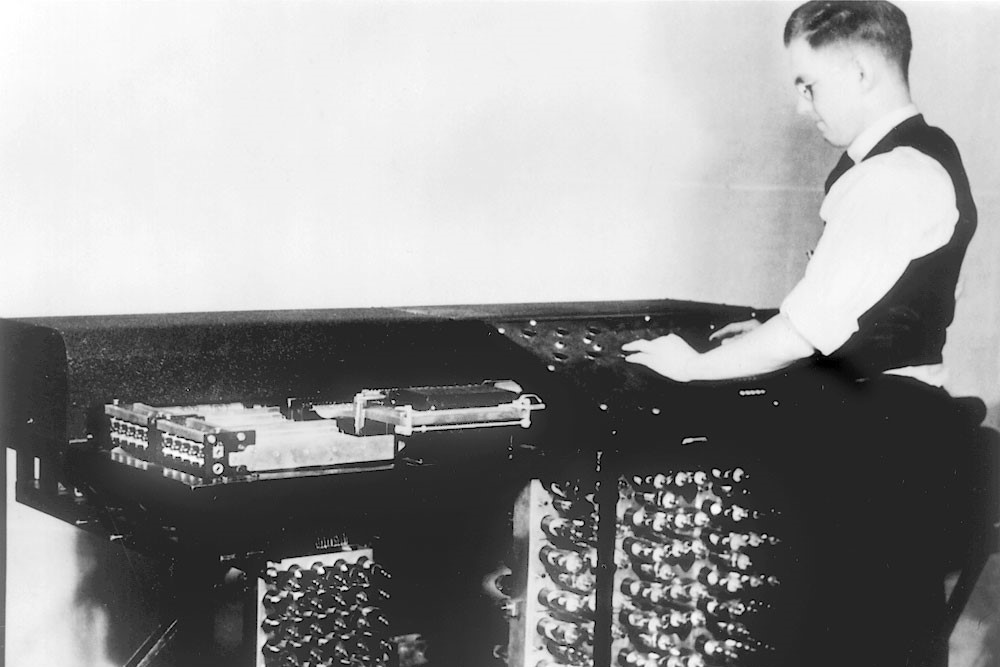

















 As seen in Douglas Adams’ masterpiece A Hitchhiker’s Guide to the Galaxy or in Isaac Asimov’s The Last Question, computers, given enough time, might be able to solve every question. Not always will two words — “Fiat Lux” — be the outcome of their research, nor the answer to life, the universe and everything, however, arguments are made that computers might technically be able to give the solution to chess problems, yet lack what a human would be able to understand: the knowledge about similar ideas shown before. No twomover ever was really solved by a computer in that way (sadly I forgot who wrote such idea many years ago, I apologize for not being able to attribute it).
As seen in Douglas Adams’ masterpiece A Hitchhiker’s Guide to the Galaxy or in Isaac Asimov’s The Last Question, computers, given enough time, might be able to solve every question. Not always will two words — “Fiat Lux” — be the outcome of their research, nor the answer to life, the universe and everything, however, arguments are made that computers might technically be able to give the solution to chess problems, yet lack what a human would be able to understand: the knowledge about similar ideas shown before. No twomover ever was really solved by a computer in that way (sadly I forgot who wrote such idea many years ago, I apologize for not being able to attribute it). The first chess computer, of course,
The first chess computer, of course, 


 Michael Roxlau [pictured] provided a tool to me that he uses for his judging. The tool by now is much more refined and understandable, so while I discarded it around 15 years ago, currently I might consider using it if I had to judge a tourney again (in fact, I signed up as a judge for a tourney this year, but not for endgame studies, so his tool is resting, as it specifically is built for studies).
Michael Roxlau [pictured] provided a tool to me that he uses for his judging. The tool by now is much more refined and understandable, so while I discarded it around 15 years ago, currently I might consider using it if I had to judge a tourney again (in fact, I signed up as a judge for a tourney this year, but not for endgame studies, so his tool is resting, as it specifically is built for studies).





